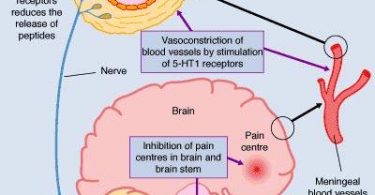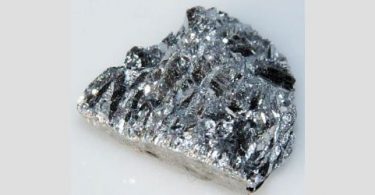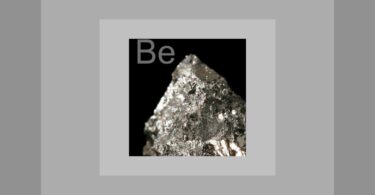Homeopaths joke that pregnancy is an excellent time to receive homeopathic care since two people (the mother and the baby) get a remedy for the price of one! But jokes aside, homeopathic treatment means the mother is more resilient and the child gets a healthier start.
Having your constitutional case taken by a homeopath generally requires a two hour visit and/or filling out a detailed questionnaire aimed at finding a remedy which covers your entire state.
Homeopathy vs. Drugs During Pregnancy
The medical profession has diverted the once joyous process of pregnancy and giving birth into a panicked, stressful medical emergency. Due to the high number of lawsuits resulting from medical negligence, doctors are now over-prescribing. Great for the doctors, but this new attitude has now brought to light increasing concern over the use of drugs during pregnancy which the foetus receives too; so, it’s better to be in the best of health so as not to need these drugs in the first place. Research has shown that drugs during labour and delivery can have short, as well as long-term effects on infants. (Korte and Scaer,1984.) Homeopathy before and during pregnancy can help to ensure a drug-free pregnancy and labor.
Let us explore some areas where homeopathy can aid during pregnancy, childbirth and after delivery.
1. Morning Sickness
2. Breech Birth
3. Labour
4. Retained Placenta
5. Post-partem Haemorrhage
6. Asphyxia of Newborn
7. Perineal Tears and Episiotomies
8. Post Natal Depression
Let us explore each of these areas, one by one.
Morning Sickness & Homeopathic Medicines
There’s no need to suffer from morning sickness thanks to homeopathy. The most common remedies for this are Sepia and Colchicum. See their descriptions in the list below along with the other morning sickness remedies. Keep in mind that you may not have all the symptoms that go with a particular remedy; just take the one that matches the best or comes the closest. Use a 30C potency, take one dose (1-5 pellets) and wait. The right remedy should have some effect within half an hour. If so, put the remedy in water and stir vigorously before each additional sip, which you should take only if there is a relapse or a failure to make progress on the single dose:
Anacardium — Nausea is relieved by eating.
Antimonium Crud. — Tongue thickly coated white. Better lying down, better warm baths, worse from being looked at.
Cocculus — Worse from motion, such as riding in a car; chilly, worse from open air; worse from loss of sleep; excessive salivation and much thirst for cold drinks.
Colchicum — Cannot bear the smell or even thought of food! Worse from riding in a car. Worse from standing up or lying flat. Better flexing knees or bending forward.
Ipecac — Continuous nausea not relieved by vomiting. Drooling. Tongue is clear/not coated. Thirstless. Desires open air, worse warmth, worse motion.
Nux Vomica — Nausea in the morning, in bed. Vomiting after eating. Disposition is irritable, angry. Constipation. Wakes at 3 AM., cannot get back to sleep. Chilly.
Pulsatilla — Desires company and sympathy. Weeping, feeling sorry for herself; craves fresh air, wants the window open; thirstless; aversion to warm food; tongue coated white or yellow.
Sepia — Empty feeling in stomach, not relieved by eating. Aversion to thought or odor of food. Desires tart food like pickles, vinegar, etc.; also desires chocolate. May complain that things taste salty. Irritable around people but does not want to be alone. Better from exercise, warmth, and sleep.
Symphoricarpus — Deathly nausea. Continuous retching and vomiting. Better lying on back, worse motion. Constipated.
Veratrum alb. — Vomiting with diarrhea. Freezing cold with cold sweat. Craves cold drinks with ice. Weak. Worse from exertion.
Tabacum — Deathly nausea, sinking feeling, cold and clammy, chills. Worse from any motion such as riding in a car. Much cold sweat. Pale. Tendency to spit. Worse heat, better fresh air.
(A note by Dr. B – Morning Sickness is by definition not a disease. It should be treated only when the symptoms are severe. Apart from the homeopathic medicines, there are certain other factors that should be considered. It has been found that Morning Sickness has a direct relation with the female psychology too. It has been found that women who have a job or who have to conceal their pregnancy, often do not suffer from Morning Sickness. It has been seen that in working woman, morning sickness is worse on weekends! Physically strong and well-nourished females often have less problem.
As general measure to limit the severity of Morning Sickness, it is suggested that the pregnant woman should get up from the bed only after munching a biscuit or two. A high calorie diet and sweets are also known to reduce Morning Sickness. Hunger can also induce like symptoms in pregnancy, so long periods without food should be avoided.)
Breech Birth & Homeopathy
The most common and preferred position for the birth of a baby is head first. A breech position is when the baby is positioned in the womb to be born feet or buttocks first. A breech birth is frequently delivered by caesarean. Before 36 weeks it is sometimes possible to turn the baby into the preferred position (Locke,1991). Pulsatilla and Natrum Muriaticum are two remedies that can help turn the baby around in the womb.
Pulsatilla is a common remedy for this. A treatment of giving multiple doses of Pulsatilla 30c once a day (no more than 6 doses) or a 200c only once will often turn the baby. The woman, if needing Pulsatilla, may also show evidence of the common Pulsatilla mentals–desire for sympathy and company and a craving for fresh air; also, a tendency toward weeping and crying openly. The remedy Pulsatilla stimulates the muscles of the womb (Schmukler, 2003).
Natrum Muriaticum has also been indicated as a good remedy to move the foetus out of the breech position and is best indicated when the mother is feeling like she wants to be alone and is worse for company. They are emotional, but want to cry alone. The Natrum Muriaticum picture is the opposite of Pulsatilla in terms of temperment (Schmukler, 2003). Although having indicated these remedies, the best medicine is usually the one indicated by your local homeopath. These are based on the uniqueness of each woman’s symptoms and should always be the preferred treatment.
Managing Labour with Homeopathic Medicines
During labour a women can be treated acutely. Acute prescribing is also of benefit to the baby, such as a dose of Arnica 200c after the birth for both mother and baby which will ease the trauma/bruising endured during the labour.
Early Labour
Early labour is when contractions may come and go and the labour is not fully established. Pulsatilla 200c may help labour start properly.
Established Labour
The First part of labour usually can last anywhere from 12 hours in a first pregnancy to 6 hours for a second pregnancy, but no hard and fast rules apply. Uniquely, a woman can be in the first stage for as little time as a few minutes or as long as 36 hours–just ask my mother! Homeopathic remedies at this stage can be used to help any natural hold-ups ensuring the process progresses naturally without the use of allopathic drugs. One remedy is Caulophyllum. This is given to induce labour or used once when the progress is definitely underway as it strengthens contractions. Symptoms that indicate Caulophyllum include an excitability, restlessness and nervousness, a woman who trembles internally from weaknesses, is chilly and better for warmth. She will have erratic pains flying about from place to place, a lack of tone of the uterus and labour pains that are irregular. The woman may experience stiffness in smaller joints like the fingers. The mother to be will be exhausted and fretful and will desire company but will not be talkative. Spasmodic and severe pains which fly in all directions. Labour pains that are weak and irregular. (Murphy, 2000).
Second Stage of Labour
The second stage of labour usually lasts an hour or so in first pregnancies and about half an hour the second pregnancy. This stage of contractions become stronger and women may experience excessive pain. Chamomilla will help with painful contractions. The woman will be irritable, cross and abusive; she will demand things and then push them away. She will say things like, “I can’t take this anymore!” This is the picture of the women that is ready to kill the partner for her pregnancy. The pain maybe felt as a numbness feeling with the labour pains pushing upwards. A Chamomilla person is thirsty and may have one cheek red and the other pale.
The Belladonna pain is described as hot and throbbing with labour pains bearing downwards. Belladonna people are thirstless with both cheeks red. A Belladonna person may be delirious and might hit and bite.
Sepia is also worth considering when we are talking about unbearable labour pains. Sepia’s pain is described as dull and extends down into the thighs with a bearing down pain and the body will be flushed with heat. She will be chilly and want to be covered. Sepia will be irritated by company but doesn’t want to be alone. She will be worse from consolation, depressed with weeping episodes and then turn and be sarcastic. A Sepia woman will be aggravated by the thoughts or odor of food.
Other remedies for pain: Coffea, Aconite, Nux Vomica, Ignatia, Arsenicum, Kali Carbonicum, and Pulsatilla. A dose of Arnica prior to the birthing and immediately afterwards can prevent many delivery problems. The patient needing Arnica will feel bruised but will say she’s “okay” and have a fear of being touched.
Third Stage of Labour
Once the baby is born, the third stage proceeds and a dose of Aconite to the mother and the baby will help if fear is predominant. This can also be given for the next few days if needed. The final stage takes another 30 minutes or sometimes longer and is marked by an increase in bleeding as the placenta is delivered. Nursing the baby helps detachment of the placenta naturally.
Retained Placenta & Homeopathic Medicines
Commonly these days in the maternity hospitals an allopathic drug Syntometrine (derived from Secale also used as a homeopathic remedy) is given. But the use of the natural remedies to aid contraction of the womb and expulsion of the placenta might prevent the need of Syntometrine. To assist the body in expelling the placenta, Pulsatilla, Cantharis and Sepia should be considered.
The Pulsatilla person craves fresh air and wants windows opened. She is gentle and yielding and better for sympathy; dry mouth but without thirst.
The Cantharis patient has painful, burning urination. She will have a constant desire to urinate but will only pass minute amounts. She will be anxious, restless and angry.
The Sepia patient will have the sensation that the uterus is falling out–a bearing-down sensation. She wants to be covered, will want to be alone but afraid to be alone. If the placenta has not detached after an hour it will have to be removed by hand and this is done under a general anaesthetic.
Post-Partem Haemorrhage & Homeopathic Remedies
Massaging or pulling on the umbilical cord after the birth of the child can cause stress on the detachment process and can result in partial separation of the placenta which can result in post-partem haemorrhage. Cinchona (also known as China) is a good remedy for any loss of fluid/blood and can help to sustain the body.
Some other significant remedies that can help with post-partem haemorrhaging are:
Belladonna–flushed cheeks with the neck arteries throbbing, dilated pupils, bright red blood with clots which stops and starts suddenly. She will have a bearing-down feeling and think that her insides are going to fall out. Noise and light will irritate.
The look of fear that she is going to die signals the need for Aconite. She will be restless and have bright red blood that spurts out. Her face will be hot and dry. Aconite also has a great thirst.
Chamomilla –very uncivil and angry. She will describe the pain as unbearable and she is very sensitive to pain. She will have cold hands and feet. The haemorrhaging will be dark.
Ipecacuanha will be chilly and have a pale face with cold sweat. The blood will be bright red and the woman will feel nauseous. The pain will be from the umbilicus to the uterus.
Pains running from the back through to the front signal a need for Sabina. The blood is bright red and gushing but the consistency will be thin with dark clots. Sabina is worse from warmth.
The red face of Belladonna is likened to Ferrum Metallicum but unlike Belladonna, Ferrum Metallicum can’t bare the slightest noise and is worse at midnight. The blood will be dark and coagulated. She will have cold hands and feet. (Schmukler, 2003)
Asphyxia of the Newborn & Homeopathic Medicines
When the baby is delivered, the lungs need to convert from inhaling fluid to air and babies that fail to breath are commonly premature, overdue or babies whose mothers had pethidine during the labour. Commonly meconium or mucous can obstruct the airways. Human intervention of gentle suction to the nose, mouth and throat can extract meconium or mucous. This can help along with the following remedies:
Antimonium Tartaricum is the first remedy to consider. The baby will have a rattling sound and be pale. The lungs are filled with thick mucous.
Camphora can be used if Antimonium Tartaricum has failed. Use Camphora for meconium in the lungs. The baby is freezing cold, blue and limp. The pulse is small and weak.
Opium is indicated for coma or asphyxia especially after fright, the baby is unresponsive. The mother may have been frightened.
Carbo Veg is for when the baby is limp, near death, blue and needs oxygen to restore the body’s vital force.
Arnica is to be used when there has been a traumatic birth resulting in any head bruising or trauma. There is a weakness in reflexes.
The Lauroceraus baby will be cold, blue but gasping for breath with a failing pulse.
Perineal Tears, Episiotomies & Homeopathic Medicines
Perineal massage for the duration of the pregnancy and kegel exercises can minimise the need for episiotomies. In the event of a tear, cloth-wrapped ice packs soaked with a solution of Calendula in the first 24 hours will prevent infection and promote healing. Other remedies to speed healing are: Arnica, Staphisagria, and Hypericum. Take Arnica if the mother feels bruised and worse from touch. She will feel that the bed or chair is too hard. Arnica will help control bleeding, swelling and prevent infections.
Staphisagria might be well suited when an episiotomy has been performed. The clean, razor cut wounds suits the action of Staphisagria and taking this remedy will speed healing and tissue restoration.
Hypericum is best for when there is a lot of pain that radiates from the tear or cut.
Post Delivery Considerations
The weeks and even months after the birth of a baby the body initiates its own healing. Symptoms like after pains in the uterus during breast feeding are all part of the body returning to its natural state. Many women feel a bit down after the pregnancy due to the re-balancing of hormones, blood sugar levels and the general tiredness of their new duties.
Post Natal Depression & Homeopathic Medicines
Post natal depression effects one is every ten women and homeopathy can help a mother to cope while things are settling down into a routine. Post natal depression is expressed by weeping, feeling hopeless, inadequate and anxious about the new pressure of motherhood. She may not be able to sleep and might have little interest in daily activities. It is important to match the mother’s symptoms to a remedy; consider: Sepia, Natrum Muriaticum, Pulsatilla, and Platina.
Sepia suits depression due to hormonal imbalances. The Sepia mother may reject the baby, may not want to nurse. For one thing, she is exhausted. The Sepia woman is chilly and worse in cold air. She is emotional and unable to express her deep feelings. For the Sepia person, physical exercise/dancing will make her feel better. She may seem joyless, tearful, critical and even grumpy and snappish. She will want to be alone and is worse from consolation. Sepia craves chocolate, lemons, pickles and cold drinks.
Natrum Muriaticum is emotional, introverted and solitary. She will seem remorseful rather than depressed. She will weep when alone and feel worse from heat and sunlight. She has trouble communicating feelings and won’t ask for help. She craves salt.
Pulsatilla weeps easily in company. Pulsatilla evokes sympathy and is gentle with changeable moods. She will crave fresh air and doesn’t like a stuffy warm room. Pulsatilla has no thirst.
Plantina is aloof and contemptuous. Has anyone seen “Georgie Girl”? The woman who had the baby that was mercifully adopted by “Georgie” was a Platina. She will feel alone in the world. She will have the sensation of constrictions or bandages. Plantina is better in fresh air. She wants the best of everything, feels that she is royal. May have an aversion to meat.
Just getting more sleep and having time away from the baby can help in mild post natal depression. It is important that women not feel isolated and are able to talk and having a non-judgemental listener can help.
Professional Homeopathic Treatment
A couple thinking about conceiving should consider seeing a homeopath as part of a pre-conception plan. The improved health of both parties at the time of conception can ensure your child a healthier and happier life.
Consulting a professional homeopath is a must if you are planning to use homeopathic remedies during pregnancy and childbirth. Chances are you will not, at the time of labor, have the presence of mind or the knowledge to properly prescribe for yourself or the baby when the remedies are needed most. A Professional homeopath is an objective person who will take your whole case and will ensure good health for you and your whole family for years to come.
References
Korte, D & Scaer R. A Good Birth, A Safe Birth. (1984). Bantam: New York.
Ullman,D. Discovering Homeopathy: Medicine for the 21st Century.(1995). Berkeley:North Atlantic.
Locke, Dr A. The Family Guide to Homeopathy. (1991). Hazell Books: England.
Schmukler, Alan Homeopathy: The Home Handbook for Survival (2003). Xlibris: USA.





thank you so much for the information. but i would like to know whether the medicines you have described during the three stages of pregnancy can be administered one after the other without giving much gap. if not, kindly provide the details regarding the time gap also. thank you once again
My experience and studies of homeopathy are that a remedy should be given every 5 minutes for 15 minutes and then every 15 minutes for an hour. If you are getting no results, you can certainly change remedies. The correct remedy usually shows a pretty immediate, dramatic response. One should dispense the remedy into the lid of the container and “pop” into the patients mouth without being touched as the oils in one’s hands disrupt the effect of the remedy. In addition, homeopathics should be given 15 minutes before and 15 minutes after and food or drink has been consumed – in a “clean” mouth, basically.
Hi there,
it would be great if you had a print converter to this file 🙂 !
otherwise the print is tiny (V hard to read!), wastes a lot of space in the right margin and goes for way too many pages. Not very user friendly although the information is good 🙂
thanks
Narelle BAppSc (Biomed)